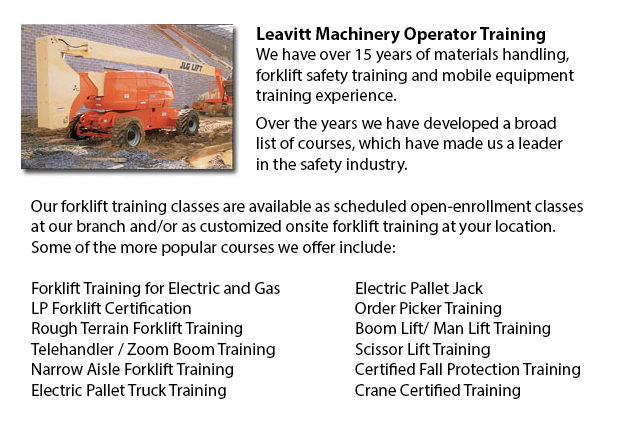
Boom Lift Safey Training Hamilton - Boom lifts fall under the kind of elevated work platform or aerial lifting device. Most commonly used in construction, industry, and warehousing; the boom lift is so versatile that it can be utilized in almost whichever surroundings.
The elevated work platform is utilized to enable access to heights that were otherwise not reachable utilizing other means. There are dangers inherent when using a boom lift device. Workers who operate them have to be trained in the right operating methods. Accident prevention is vital.
The safety factors that are included in boom lift operation are included in our Boom Lift Training Programs. The course is suitable for individuals who operate self-propelled boom supported elevated work platforms and self-propelled elevated work platforms. Upon successful completion of the course, participants will be given a certificate by an individual who is licensed to confirm the completion of a hands-on evaluation.
To help train operators in the safe utilization of elevated work platforms, industry agencies, local and federal regulators, and lift manufacturers all play a role in providing the necessary information and establishing standards. The most important ways to prevent accidents associated to the use of elevated work platforms are as follows: wearing safety gear, conducting site assessment and inspecting equipment.
Vital safety factors when operating Boom lifts:
Operators stay away from power line, observing the minimum safe approach distance (or also known as MSAD). Voltage can arc across the air to find an easy path to ground.
In order to maintain stability as the platform nears the ground, a telescopic boom needs to be retracted prior to lowering a work platform.
Boom lift workers should tie off to ensure their safety. The lanyard and safety contraption have to be attached to manufacturer provided anchorage, and never to other poles or wires. Tying off may or may not be necessary in scissor lifts, depending on particular job risks, local regulations, or employer guidelines.
Avoid working on a slope that goes beyond the maximum slope rating as specified by the manufacturer. If the slop goes beyond requirements, therefore the equipment should be transported or winched over the slope. A grade can be measured without problems by laying a straight edge or board of at least 3 feet on the slope. After that a carpenter's level could be laid on the straight edge and raising the end until it is level. The percent slope is attained by measuring the distance to the ground (the rise) and dividing the rise by the length of the straight edge. After that multiply by one hundred.
-
Crane Training School Hamilton
Crane Training School Hamilton - We provide industry relevant programs in our crane training school. The course would provide our trainees with learning outcomes matching the current industry demands. Our small class sizes combine theory and hand-on... More -
Crane Ticket Hamilton
Crane Ticket Hamilton - The new kind of a crane can be either complex or simple, and cranes differ based on their application. Mobile cranes, for example are quite simple. A telescopic boom or steel truss mounts its movable platform. A system of pull... More -
Aerial Platform Training Hamilton
Aerial Platform Training Hamilton - Aerial forklifts can be utilized to accomplish many different duties executed in hard to reach aerial spaces. Many of the tasks associated with this type of lift include performing routine upkeep on buildings with... More -
Forklift Safety Training Hamilton
Forklift Safety Training Hamilton - People wanting work in businesses which utilize lift trucks have to undergo a forklift safety training course before becoming a certified operator of a forklift. There are several ways to go about acquiring forklif... More -
Aerial Lift Certification Hamilton
Aerial Lift Certification Hamilton - Aerial Lift Certification is for workers who require a thorough knowledge of aerial lift safety. Maintenance workers, construction craftsmen and supervisors require this training to ensure that operators and inspe... More -
Crane Safety Training Hamilton
Crane Safety Training Hamilton - Both crane operator and their employers need to know all the possible problems associated to the use of an overhead crane. All over North America, there is legislation which provides rules for the safe inspection, mai... More -
Telehandler License Hamilton
Telehandler License Hamilton - A telehandler or telescopic handler is an equipment that is frequently utilized in industrial and agricultural applications. It has the same appearance to a lift truck and even functions in a similar manner, even if, th... More -
Heavy Equipment License Hamilton
Heavy Equipment License Hamilton - Acquiring a heavy equipment license is mandatory to operate these large industrial machines. Certification could be obtained through a vocational school or private training. The license would allow the driver to ope... More

Forklift Training Hamilton
TOLL FREE: 1-888-254-6157
Hamilton, Ontario
forklifttraininghamilton.com
Email Us
About Us


